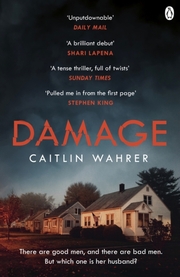Beschreibung
A paramount challenge in materials science is to design glasses that exhibit not only high strength but also toughness, i.e., the ability to resist brittle failure. This property combination constituting damage tolerance appears to be self-excluding; tough materials need to dissipate energy, for example, by plasticity, whereas high-strength materials are designed to prevent irreversible energy dissipation, thus plastic deformation. Hence, materials exhibiting concomitant high toughness (where bond breakage occurs) and high strength (where bond breakage should not occur) are chimeric from the perspective of chemical bonding, imposing severe challenges on the design of these materials. Even though there are damage-tolerant glasses reported in literature, which are predominantly developed applying empirical alloying guidelines, the underlying physical and chemical mechanisms are not understood on the atomic scale. Hence, this work focuses on identifying the origin of damagetolerant glasses. It has been reported in literature that the elastic limit of metallic glasses exhibits a strong decrease with increasing temperature, which goes in hand with an increase in plastic deformation and hence an increase in toughness. To identify the origin of the temperature dependence of the plastic behaviour, in situ high-temperature X-ray diffraction experiments using high-energy photons and ab initio molecular dynamics simulations are performed to probe the temperature induced changes in topological short-range order in magnetron sputtered Co67B33 metallic glass thin films. Based on this correlative experimental and theoretical study the presence of B-Co-B rigid second order structures at room temperature and the temperature induced decrease in population of these strongly bonded building blocks is inferred. This notion is consistent with experimental reports delineating the temperature dependence of elastic limit. In addition to temperature, chemical composition is reported to induce a change in brittle-ductile behaviour. Hence, within this work, ab initio molecular dynamics simulations are used to systematically explore the influence of alloying on the stiffness and plasticity of Co-Fe-Ta-B metallic glasses. The Co43.5Ta6.1B50.4 metallic glass studied in this work, with a Young's modulus of 295 GPa, is the stiffest metallic glass known in literature. From the analysis of the density of the states it is suggested that the very large stiffness is due to strong covalent metal to B bonding. Furthermore it has been observed that by alloying with Y, Zr, Nb, Mo, Hf, W, C, N and O the Poisson's ratio can be varied from 0.293 to 0.342. As noted by Lewandowski et al. a brittle-to-plastic transition for metallic glasses can be identified in the range of 0.31-0.32. The here observed increase in Poisson's ratio can be attributed to a change from predominately covalent to predominately metallic bond character. Thus, it can be perceived that the mechanical properties of metallic glasses are strongly affected by the interplay between chemistry and topology. However, up to now there is no high throughput method present in literature to study the chemically induced topological evolution of metallic glass thin films. Hence, a novel method is introduced which enables spatially resolved short range order analysis along concentration gradients of combinatorial metallic glass thin films. For this purpose a Co-Zr-Ta-B metallic glass thin film with a thickness of 3 µm is deposited on a thin polyimide foil, which is investigated by high energy X-ray diffraction in transmission mode. Through a correlative chemistry-topology-stiffness investigation along the Ta-B concentration gradient it is observed that an increase in metalloid concentration from 26.4 to 32.7 at.% and the associated formation of localized (hybridised) metal - metalloid bonds induce a 10 % increase in stiffness. Concomitantly, along the same composition gradient, a metalloid-concentrationinduced inc
Herstellerkennzeichnung:
Shaker Verlag GmbH
Am Langen Graben 15a
52353 Düren
DE
E-Mail: info@shaker.de





































































































